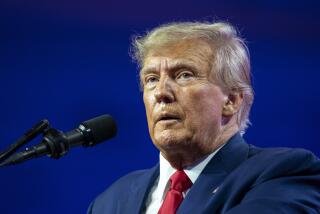Credit cards find $46-billion-a-year world to conquer
Just off the ice at the StarCenter, Jenafir Chant held a credit card against a vending machine. A second later, a bottle of Diet Dr Pepper tumbled into view.
The machine takes plastic.
“We were all excited when these went in last week,” said Chant, who leads a team of young women who resurface the ice between periods at Dallas Stars hockey games. “I was scrounging around for $2.... Now I don’t have to scrounge.”
The machine at the arena is one of 750 that Cadbury Schweppes and MasterCard Inc. are testing in the Dallas area, New York and Chicago to answer a key question: Will people spend more at vending machines if they can use plastic?
The early answer is, yes.
Some of the machines were installed in January and have seen sales increases of 5% to 35% without any change in prices, said Mark Jackson, a vice president with Cadbury’s U.S. beverages subsidiary, which markets Dr Pepper, Snapple, 7UP and other drinks.
Cadbury’s experience fits with sales increases that other companies have reported when they shift from cash to plastic.
Possible explanations vary from people not wanting to carry change, to ATMs that dispense only $20 bills, which can’t be used in most vending machines.
Cadbury is retrofitting machines in Dallas, New York and Chicago to take all major credit cards and debit cards. They still accept cash, too.
The beverage giant carefully selected locations for the machines, looking for locations frequented by adults likely to have and use plastic. They’ve installed them at Dallas City Hall, the convention center, hospitals, a college and recreational facilities like the ice rink in Frisco.
“There is always going to be a degree of cash transactions,” Jackson said. “But we recognize the fact we’re moving more and more to a cashless society. We wanted to offer consumers a convenient way to buy our products out of a vending machine without having change or getting change.”
The Cadbury machines were retrofitted by USA Technologies Inc., of Malvern, Pa., which was created 15 years ago for the sole purpose of developing cashless systems. Executives believed the day was coming when Americans would want to make nearly all their purchases with plastic.
“We looked at places that historically only took cash,” said Stephen Herbert, the company’s president and chief operating officer. “Fast-food was the first big stop, and vending was second.”
According to Vending Times, an industry publication, vending was a $46-billion business in 2005 and it was virtually all cash. That makes it an appealing target for banks that issue credit cards.
Credit card vending machines are also sell DVDs, and Sony has a few that dispense digital cameras and other gadgets. But inexpensive items present a special challenge because transaction costs of even a few cents can wipe out profit on a soda that sells for $1.25.
“Vending is going to be the ultimate test for cashless” transactions, said Nick Montano, executive editor of Vending Times. “It’s going to be five or 10 years before it really takes off.”






